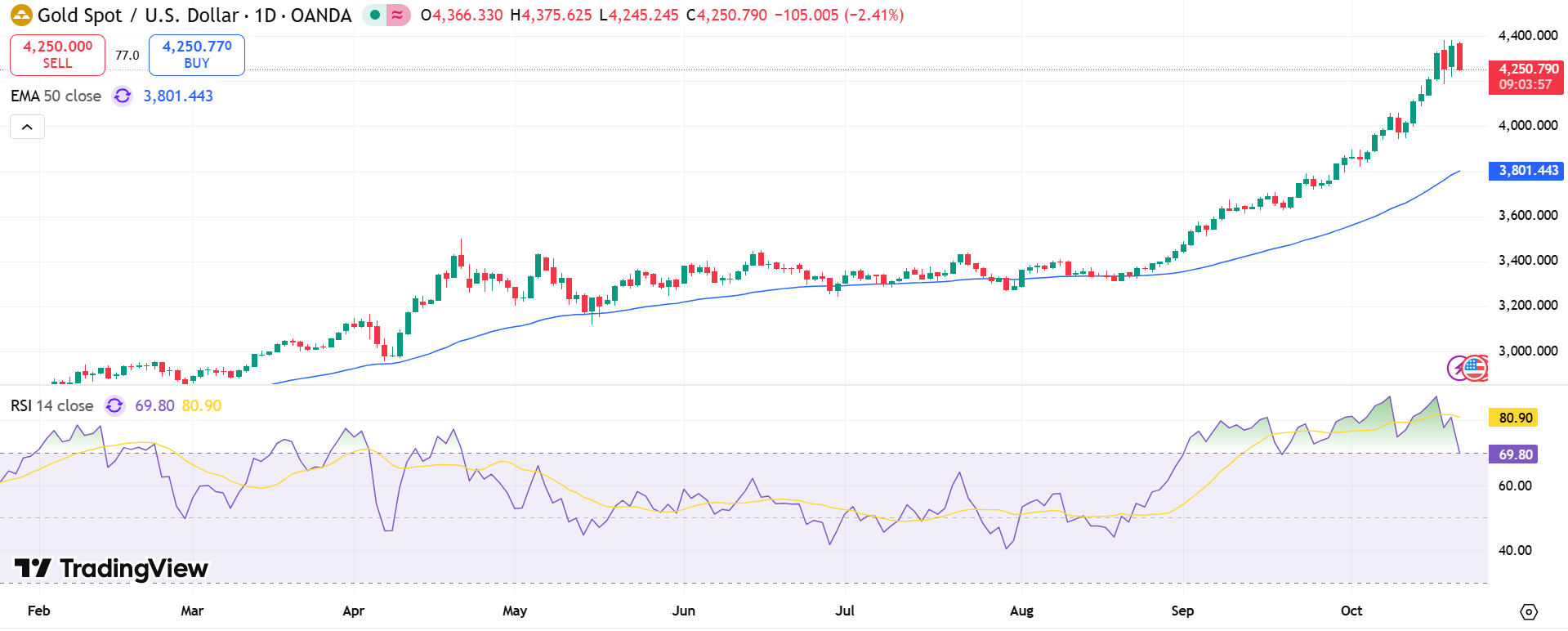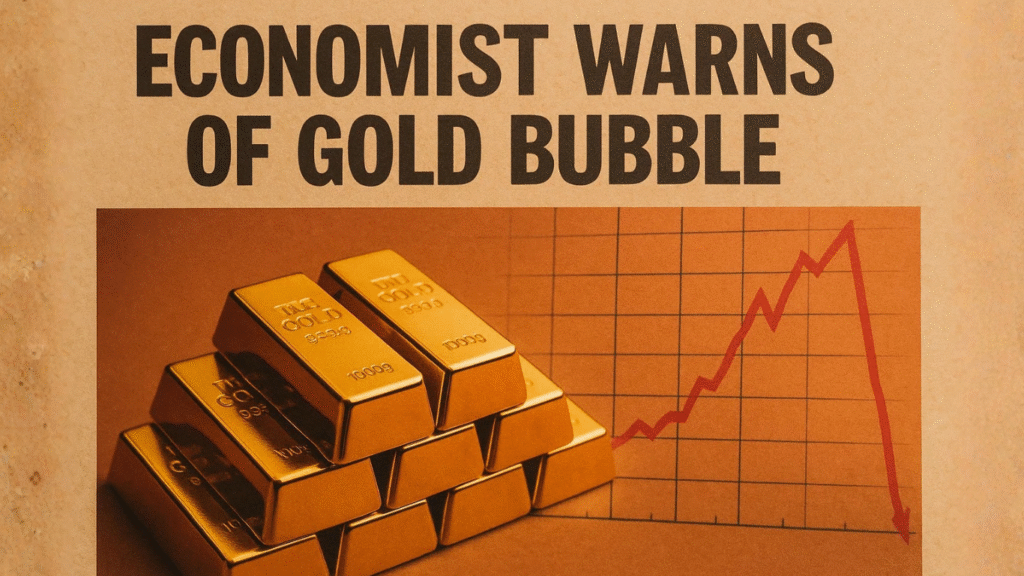Gold’s record-breaking surge could be nearing its breaking point, according to John Higgins, Chief Markets Economist at Capital Economics. In a recent analysis, Higgins cautioned that gold’s value has climbed far beyond its historical benchmarks, suggesting the precious metal may be trading in bubble territory.
“At the start of 2025, gold was already near its inflation-adjusted peak from 1980,” Higgins wrote. “Now, the real price is almost 60% higher than that level and more than three times its long-term average since 1980.”
While gold is traditionally seen as a safe-haven asset, Higgins said the latest rally is difficult to justify. Unlike earlier bull runs driven by falling bond yields or inflation fears, the current climb has continued despite rising real yields and easing inflation.
Fundamentals No Longer Support the Surge
Gold’s ascent, Higgins argued, has diverged from its historical relationships with key market indicators. The tight correlation between gold and Treasury Inflation-Protected Securities (TIPS) yields has weakened in recent years, raising doubts about traditional valuation models.
“Since gold pays no interest, it becomes more attractive when real yields fall,” Higgins explained. “But yields have been rising, not falling, suggesting that fundamentals don’t explain today’s prices.”
Inflation, another typical driver, has also been moderating since its post-pandemic peak, undermining claims that inflation hedging is behind the rally.
Instead, speculative forces may now be leading the charge. Higgins identified several short-term factors that could be inflating the market:
- Central banks diversifying reserves away from the U.S. dollar
- Rising ETF inflows as retail investors chase momentum
- Strong Chinese demand for physical gold
- Growing fear of missing out (FOMO) among traders
Speculation vs. Structure: What’s Next for Gold?

Despite his warning, Higgins acknowledged that some structural shifts—such as long-term central bank buying and dollar diversification—could support prices even after a correction.
Still, he cautioned that gold’s current trajectory looks unsustainable, with investor exuberance outpacing economic logic.
“It’s increasingly possible that gold is in a bubble that will burst before long,” Higgins concluded.
As of 09:38 GMT, gold spot prices had fallen 1.8% to $4,283 per ounce, retreating from recent highs. Analysts now warn that while geopolitical uncertainty continues to buoy demand, the next major move may be downward if sentiment cools.


